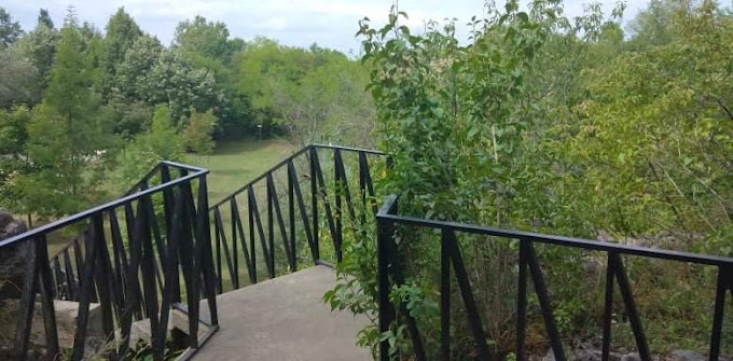The protected area includes the former spring limestone mine of Vértesszőlős. The spring limestone was deposited on the Pleistocene terraces of the Által-ér, a tributary of the Danube, with a thickness of 8-10 m.
The spring limestone is excellent for preserving plant and animal remains: animals and plant remains (leaves, seeds, cones) living in the water or falling into it were encrusted by the lime precipitated from the warm water, which could later turn into lime tuff. In this way, he made fine prints of them.
84/2007 on maintaining the protection of the nature conservation area of the Vértesszőlős prehistoric settlement. (X. 18.) Maintained by KvVM decree.
Basic data
Declared protected: 12/1976. OTvH no. by resolution
Pedigree number: 132/TT/76
Extent: 35 ha
The affected village boundary: Vértesszőlős
Nature conservation manager: Hungarian National Museum
Brief description of the protected natural values
The protected area includes one of the spring limestone mines of Vértesszőlős. In Vértesszőlős, several travertine (freshwater limestone, lime tufa) quarries operated, of which the paleontological and archaeological findings were found in the highest and oldest.
As a result of geological and archaeological research carried out in and around the Vértesszőlős mine, in addition to ancient animal remains, mammal and snail fauna of age-defining value, nature has preserved fossilized bison, rhinoceros, bear and deer footprints buried in the former soft lime mud. Later, they also found an extremely rich collection of prehistoric finds: a stove, stone tools and animal bones. The research was conducted under the direction of László Vértes. During the excavations, 4 in the I. site, III. 5 cultural layers were excavated at the site, while II. most large mammal bones were found at the site. A total of 8 sites were documented in the working mine, but excavations were only carried out in the I-II-III. took place at sites.
4 fragments of human baby teeth and a occipital bone ("Samu") were found in Vértesszőlős. They found the remains of the ossified sutured skull of the adult, a occipital bone up to 16 mm thick, with traces of a blow near the old hole. The broken skull bone refers to the cultic customs of brain marrow removal, similar to Neanderthal, Javanese and other skull remains. Our ancestor who hunted, made stone tools and used fire was called "Homo (erectus seu sapiens) paleohun-garicus". Regarding its age, according to some findings, it is 300,000 years old. Based on its findings, the excavation gained world fame. Due to its uniqueness, the rock excavations are recorded as geological base sections.
